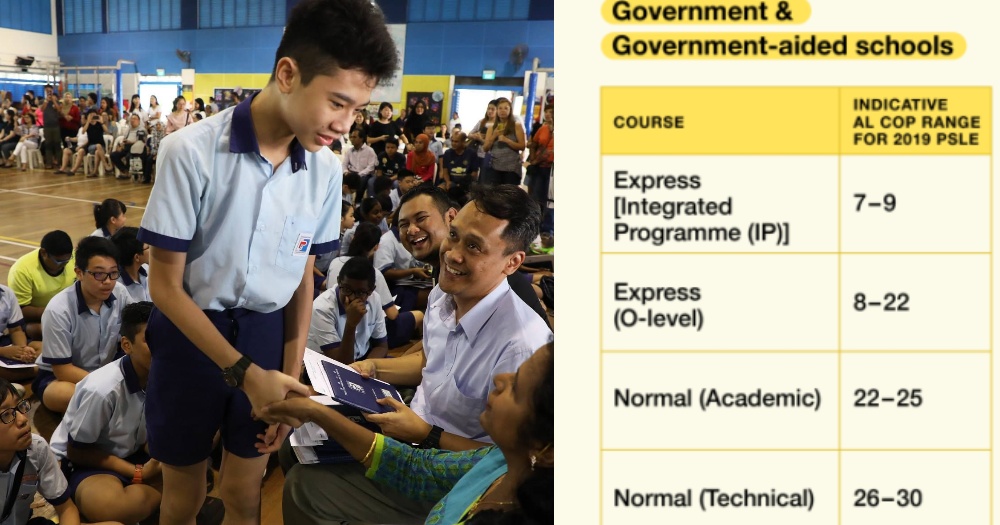The Ministry of Education (MOE) is releasing indicative Achievement Level (AL) cut-off ranges for different school types.
This is to help the first batch of students and parents familiarise themselves with the new Primary School Leaving Examinations (PSLE) scoring system.
Under the new scoring system, which will take place in 2021, students will receive AL scores instead of T-scores, and be graded based on their individual performance in the subjects, regardless of how their peers have performed.
According to MOE, these changes will reinforce their efforts to shift away from an "over-emphasis" on academic results.
COPs may differ from year to year
MOE has generated the indicative AL Cut-Off Point (COP) ranges for different school types, based on PSLE results and school choice patterns at the 2019 Secondary One (S1) Posting Exercise.
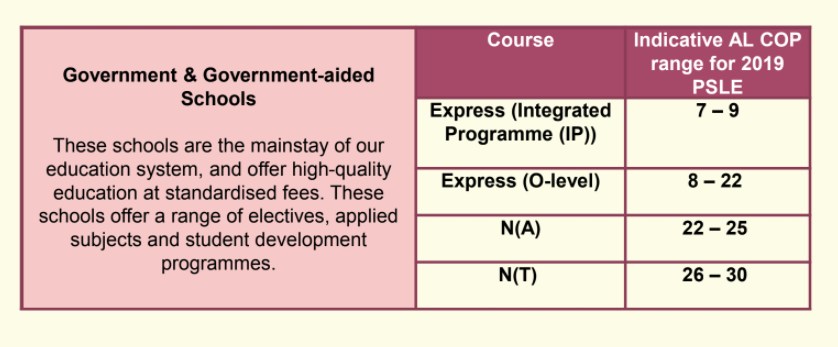 Image via MOE.
Image via MOE.
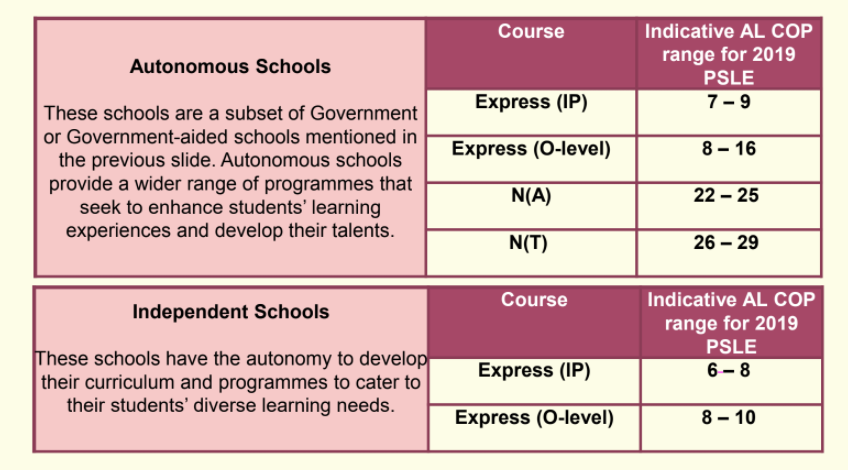 Image via MOE.
Image via MOE.
The AL COP refers to the AL score of the last student admitted into a particular school in the previous year via S1 posting.
Similar to the current T-score system, AL COPs may vary from year to year, depending on students' PSLE results and their school choices for that year's S1 Posting Exercise.
MOE will only provide the indicative AL COPs for individual secondary schools in the first half of 2021, based on the PSLE results and school choices of the 2020 PSLE cohort.
According to MOE, as the AL bands on the whole have been deliberately designed to be wider, more schools will likely have the same AL COP.
Parents may be asking themselves, if schools have the same AL COP, how would they differentiate between them. MOE encouraged parents to look beyond a school's COP when making a decision, and choosing one that overall suits the student's needs the best.
For more details on the list of schools under the various school types, one can visit https://go.gov.sg/school-list.
For more information on the schools’ electives and programmes, Co-Curricular Activities (CCAs) and locations, please visit
https://beta.moe.gov.sg/schoolfinder.
Best possible score is a 4
Under the new system, the PSLE score will range from 4, being the best score possible, to 32.
For reference, these are the respective marks needed for each AL.
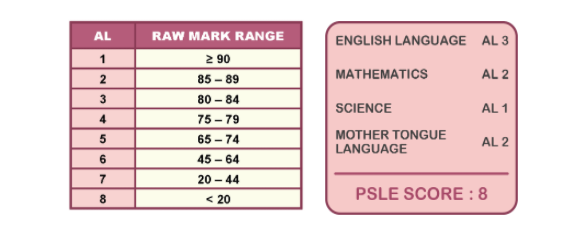 Image via MOE.
Image via MOE.
According to MOE, there are 29 possible PSLE scores, compared to more than 200 different T-scores under the current system, which will "reduce excessively fine differentiation" of students at a young age.
Given that more students will have the same score under the new system, the order of the student's choice of schools will now play a bigger role.
While students will continue to be posted to a secondary school based on their overall PSLE score, and their school choice rank order, if two students with the PSLE score vie for the last remaining place in a school, the choice order of schools will now be used as a tie-breaker.
For example, if Student A and Student B have the same PSLE Score of eight, and both apply to School C, the student who ranked School C higher on their list will be allocated the school first.
New Subject-Based Banding criteria
Previously, MOE introduced Subject-Based Banding (SSB) in all secondary schools with Normal Academic N(A) and Normal Technical N(T) courses.
Under the new PSLE scoring system, students will continue to be eligible to take subjects at a more demanding level at Secondary One, based on their AL scores for individual subjects.
The new SBB eligibility criteria is as follows:
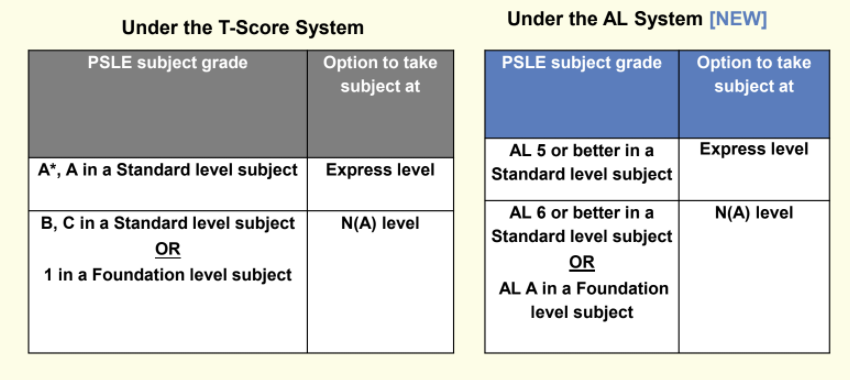 Image via MOE.
Image via MOE.
According to MOE, as students progress in secondary school, they will be given opportunities to take subjects at more demanding levels, based on their performance in school.
We deliver more stories to you on LinkedIn
Top image via MOE/FB (taken in 2018) & MOE.
If you like what you read, follow us on Facebook, Instagram, Twitter and Telegram to get the latest updates.
